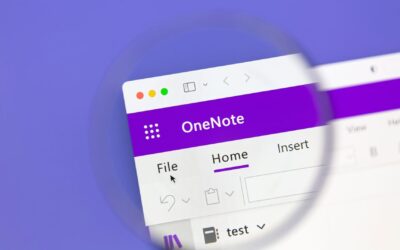Microsoft 365 is the perfect solution to strengthen your NIST cybersecurity program.
This strength comes from Microsoft’s close alignment with NIST AKA The National Institute of Standards and Technology. By combining Microsoft 365 services with NIST guidelines, businesses get an easy-to-follow IT planning blueprint.
Now part of The Commerce Department, NIST is over 100 hundred years old and plays a vital role in supporting various industries with technology, measurements, and standards.
And Microsoft is the worldwide leader in Software as a Service (SaaS).
Learn More: The Evolution of SaaS
They’re not only one of the strongest horses to bet on for the long haul; Microsoft 365 has innovative applications that only get better every year.
Wouldn’t it be convenient to build your IT stack around ubiquitous business tools specifically designed to support NIST Cybersecurity?
The next few sections feature four NIST functions mapped to four security pillars within Microsoft 365:
- Identity and Access Management
- Threat Protection
- Information Protection
- Security Management
NIST Cybersecurity Guideline #1 – Identify
Microsoft Azure Active Directory helps you identify each one of your digital assets.
Organizations benefit from robust controls with management and provisioning capabilities that track and verify user identities, workstations, mobile devices, company data, and cloud applications.
Even better, your team has Single-Sign-On (SSO) access to everything they need to work securely, from any location, at any time.
Azure Active Directory creates secure access to all of your applications, wherever they happen to be – on a server in the office or several dozen clouds.
SSO is one of my favorite applications and will be the norm in five years.
NIST Cybersecurity Guideline #2 – Protect
Identity management and access control protect you with insights informed by machine learning. This technology pulls data from billions of authentications every day.
Then cybersecurity experts score the data and provide real-time risk ratings for each user and device attempting to access the network.
Azure Active Directory is configurable with conditions to set parameters around your people, devices, apps, and associated risks.
Are you located in Atlanta? Would you be suspicious if someone from Belarus was attempting a login?
How would you feel about someone from your team jumping on the network with a device missing the latest virus protection software?
Azure Active Directory nips all of this risky activity in the bud.
The application is also adjustable to trigger system responses based on risk level, Multi-Factor Authentication rules, device registration requirements, and repeated password submission fails.
NIST Cybersecurity Guideline #3 – Detect
NIST helps you detect new and emerging threats in today’s era of constant digital warfare.
Why is detection so critical? The dark side of the technology community is unleashing a daily torrent of anomalous activity targeting user devices, email, and identity credentials. Don’t worry. Microsoft 365 has you covered with an evolving multi-layered security solution including:
- Windows Defender Advanced Threat Protection (ATP) for endpoints
- Office 365 ATP for emails, attachments, and cloud file storage
- Azure ATP for identity credential attacks
You can test higher-risk user behavior with cyber-attack simulations to identify and take corrective measures.
Continuous network monitoring, scanning, logging, and reporting keep a constant pulse on suspicious activities while providing actionable forensic data.
You can also proactively manage granular compliance details with Intune device monitoring.
The Intune dashboard provides visibility into global compliance for every device, including individual settings, individual policies, and individual machines.
NIST Cybersecurity Guideline #4 – Respond
Azure Active Directory Access and usage reports will lighten your response planning overhead with insights that reveal the effectiveness of your Azure Active Directory implementation.
If there are any gaps, you can immediately respond to neutralize the impact of potential threats, events, or security incidents.
There’s something to be said about a solution that’s programmed to notify you whether or not you have it configured correctly.
How’s that for intelligent design?
As part of Microsoft’s commitment to protecting client data and the uptime of your services, they include a rich array of incident response tools to strengthen your risk mitigation strategy.
Resources include security incident guides, Office 365 cyber event whitepapers, and built-in reports to educate everyone on your team.
You can also initiate emergency intervention on user machines and specific files in the middle of an attack.
While 100% protection is impossible, it’s empowering to know you can contain and reduce the damage caused by internal and external threat actors.
NIST and Microsoft provide safety through longevity.
Microsoft and NIST are formidable in increasing performance, lowering risk, and having a unified sheet of music to justify investments in business-optimizing technology.
Both Microsoft and NIST form a collective north star. Why not benefit by following an explicit set of directions to travel a well-worn path?
If you have a technology planning committee (and any skeptics reluctant to approve anything), this framework is compelling. It also withstands rigid legal scrutiny.
For a deeper dive into the product nuances (and the source material that inspired this discussion), I encourage you to explore the following link:
Learn More: Microsoft & NIST CSF
Or schedule a free consultation.



